样式: 排序: IF: - GO 导出 标记为已读
-
Two-dimensional material/group-III nitride hetero-structures and devices Rep. Prog. Phys. (IF 19.0) Pub Date : 2025-04-03
Tingting Lin, Yi Zeng, Xinyu Liao, Jing Li, Changjian Zhou and Wenliang WangTwo-dimensional (2D) material (graphene, MoS2, WSe2, MXene, etc)/group-III nitride (GaN, AlN, and their compounds) hetero-structures have been given special attention, on account of their prospective applications in remarkable performance broadband photodetectors, light-emitting diodes, solar cells, memristors, hydrogen sensors, etc. The utilization of advantages of the above two kind materials provides
-
Perturbative framework for engineering arbitrary Floquet Hamiltonian Rep. Prog. Phys. (IF 19.0) Pub Date : 2025-02-21
Yingdan Xu, Lingzhen GuoWe develop a systematic perturbative framework to engineer an arbitrary target Hamiltonian in the Floquet phase space of a periodically driven oscillator based on Floquet–Magnus expansion. The high-order errors in the engineered Floquet Hamiltonian are mitigated by adding high-order driving potentials perturbatively. We introduce a transformation method that allows us to obtain an analytical expression
-
Liquid–liquid crystalline phase separation of filamentous colloids and semiflexible polymers: experiments, theory and simulations Rep. Prog. Phys. (IF 19.0) Pub Date : 2025-02-20
Hamed Almohammadi, Sayyed Ahmad Khadem, Paride Azzari, Ye Yuan, André Guerra, Alejandro D Rey, Raffaele MezzengaLiquid–liquid crystalline phase separation (LLCPS) is the process by which an initially homogenous single-phase solution composed of a solvent-most frequently water- and a solute-typically rigid or semiflexible macromolecules, polymers, supramolecular aggregates, or filamentous colloids-demixes into two (or more) distinct phases in which one phase is depleted by the solute and features properties of
-
Transport resistance strikes back: unveiling its impact on fill factor losses in organic solar cells Rep. Prog. Phys. (IF 19.0) Pub Date : 2025-02-17
Maria Saladina, Carsten DeibelThe fill factor ( FF) is a critical parameter for solar cell efficiency, but its analytical description is challenging due to the interplay between recombination and charge extraction processes. A significant factor contributing to FF losses, beyond recombination, that has not received much attention is the influence of charge transport. In most state-of-the-art organic solar cells, the primary limitations
-
A cordial introduction to double scaled SYK Rep. Prog. Phys. (IF 19.0) Pub Date : 2025-02-14
Micha Berkooz, Ohad MamroudWe review recent progress regarding the double scaled Sachdev–Ye–Kitaev model and other p-local quantum mechanical random Hamiltonians. These models exhibit an expansion using chord diagrams, which can be solved by combinatorial methods. We describe exact results in these models, including their spectrum, correlation functions, and Lyapunov exponent. In a certain limit, these techniques manifest the
-
Smoothed particle hydrodynamics for free-surface and multiphase flows: a review Rep. Prog. Phys. (IF 19.0) Pub Date : 2025-02-11
David Le Touzé, Andrea ColagrossiThe smoothed particle hydrodynamics (SPH) method is expanding and is being applied to more and more fields, particularly in engineering. The majority of current SPH developments deal with free-surface and multiphase flows, especially for situations where geometrically complex interface configurations are involved. The present review article covers the last 25 years of development of the method to simulate
-
Corrigendum: A review of UTe2at high magnetic fields (2023Rep. Prog. Phys.86 114501). Rep. Prog. Phys. (IF 19.0) Pub Date : 2025-02-07
Sylvia K Lewin,Corey E Frank,Sheng Ran,Johnpierre Paglione,Nicholas P Butch -
Interatomic Coulombic decay in lithium-doped large helium nanodroplets induced by photoelectron impact excitation Rep. Prog. Phys. (IF 19.0) Pub Date : 2025-02-07
L Ben Ltaief, K Sishodia, J D Asmussen, A R Abid, S R Krishnan, H B Pedersen, N Sisourat, M MudrichIrradiation of condensed matter with ionizing radiation generally causes direct photoionization as well as secondary processes that often dominate the ionization dynamics. Here, large helium (He) nanodroplets with radius ≳40nm doped with lithium (Li) atoms are irradiated with extreme ultraviolet (XUV) photons of energy hν⩾44.4 eV and indirect ionization of the Li dopants is observed in addition to
-
Search for light long-lived particles decaying to displaced jets in proton–proton collisions at s=13.6 TeV Rep. Prog. Phys. (IF 19.0) Pub Date : 2025-02-03
The CMS CollaborationA search for light long-lived particles (LLPs) decaying to displaced jets is presented, using a data sample of proton–proton collisions at a center-of-mass energy of 13.6 TeV, corresponding to an integrated luminosity of 34.7 fb−1, collected with the CMS detector at the CERN LHC in 2022. Novel trigger, reconstruction, and machine-learning techniques were developed for and employed in this search. After
-
Resilience–runtime tradeoff relations for quantum algorithms Rep. Prog. Phys. (IF 19.0) Pub Date : 2025-02-03
Luis Pedro García-Pintos, Tom O’Leary, Tanmoy Biswas, Jacob Bringewatt, Lukasz Cincio, Lucas T Brady, Yi-Kai LiuA leading approach to algorithm design aims to minimize the number of operations in an algorithm’s compilation. One intuitively expects that reducing the number of operations may decrease the chance of errors. This paradigm is particularly prevalent in quantum computing, where gates are hard to implement and noise rapidly decreases a quantum computer’s potential to outperform classical computers. Here
-
Many-body localization in the age of classical computing* Rep. Prog. Phys. (IF 19.0) Pub Date : 2025-01-20
Piotr Sierant, Maciej Lewenstein, Antonello Scardicchio, Lev Vidmar, Jakub ZakrzewskiStatistical mechanics provides a framework for describing the physics of large, complex many-body systems using only a few macroscopic parameters to determine the state of the system. For isolated quantum many-body systems, such a description is achieved via the eigenstate thermalization hypothesis (ETH), which links thermalization, ergodicity and quantum chaotic behavior. However, tendency towards
-
Dispersive gains enhance wireless power transfer with asymmetric resonance Rep. Prog. Phys. (IF 19.0) Pub Date : 2025-01-13
Xianglin Hao, Ke Yin, Shiqing Cai, Jianlong Zou, Ruibin Wang, Xikui Ma, Chi Kong Tse, Tianyu DongParity-time (PT) symmetry is a fundamental concept in non-Hermitian physics that has recently gained attention for its potential in engineering advanced electronic systems and achieving robust wireless power transfer (WPT) even in the presence of disturbances, through the incorporation of nonlinearity. However, the current PT-symmetric scheme falls short of achieving the theoretical maximum efficiency
-
Chiral polaritonics: cavity-mediated enantioselective excitation condensation Rep. Prog. Phys. (IF 19.0) Pub Date : 2025-01-09
Rosario R Riso, Matteo Castagnola, Enrico Ronca, Henrik KochSeparation of the two mirror images of a chiral molecule, the enantiomers, is a historically complicated problem of major relevance for biological systems. Since chiral molecules are optically active, it has been speculated that strong coupling to circularly polarized fields may be used as a general procedure to unlock enantiospecific reactions. In this work, we focus on how chiral cavities can be
-
Anodizing of iron-based alloys: fundamentals, recent progress, and applications Rep. Prog. Phys. (IF 19.0) Pub Date : 2025-01-06
Ruben Del Olmo, Olena Tynkevych, Magdalena Łazińska, Karolina Syrek, Tomasz Durejko, Mateusz Czerwiński, Leszek Zaraska, Ratnesh Tiwari, Marta Michalska-DomańskaThis review aims to comprehensively and systematically analyze the anodic oxidation process to form nanostructured oxide films on the surface of the most technologically relevant Fe-based alloys and steels. A special emphasis is put on detailed analysis of the mechanisms of the anodic formation of Fe-based nanostructured materials. The effect of anodizing parameters including the type of Fe-alloy,
-
Spinless topological chirality from Umklapp scattering in twisted 3D structures Rep. Prog. Phys. (IF 19.0) Pub Date : 2024-12-31
Cong Chen, Xu-Tao Zeng, Wang YaoSpinless systems exhibit unique topological characteristics compared to spinful ones, stemming from their distinct algebra. Without chiral interactions typically linked to spin, an intriguing yet unexplored interplay between topological and structural chirality may be anticipated. Here we discover spinless topological chiralities solely from structural chiralities that lie in the 3D spatial patterning
-
Whispering gallery mode optical resonators for biological and chemical detection: current practices, future perspectives, and challenges Rep. Prog. Phys. (IF 19.0) Pub Date : 2024-12-23
Shuang Hao, Judith SuSensors are important for a wide variety of applications include medical diagnostics and environmental monitoring. Due to their long photon confinement times, whispering gallery mode (WGM) sensors are among the most sensitive sensors currently in existence. We briefly discuss what are WGM sensors, the principles of WGM sensing, and the history of the field, beginning with Mie theory. We discuss recent
-
Coupled infectious disease and behavior dynamics. A review of model assumptions Rep. Prog. Phys. (IF 19.0) Pub Date : 2024-12-16
Andreas Reitenbach, Fabio Sartori, Sven Banisch, Anastasia Golovin, André Calero Valdez, Mirjam Kretzschmar, Viola Priesemann, Michael MäsTo comprehend the dynamics of infectious disease transmission, it is imperative to incorporate human protective behavior into models of disease spreading. While models exist for both infectious disease and behavior dynamics independently, the integration of these aspects has yet to yield a cohesive body of literature. Such an integration is crucial for gaining insights into phenomena like the rise
-
Searches for exotic spin-dependent interactions with spin sensors Rep. Prog. Phys. (IF 19.0) Pub Date : 2024-12-13
Min Jiang, Haowen Su, Yifan Chen, Man Jiao, Ying Huang, Yuanhong Wang, Xing Rong, Xinhua Peng, Jiangfeng DuNumerous theories have postulated the existence of exotic spin-dependent interactions beyond the Standard Model of particle physics. Spin-based quantum sensors, which utilize the quantum properties of spins to enhance measurement precision, emerge as powerful tools for probing these exotic interactions. These sensors encompass a wide range of technologies, such as optically pumped magnetometers, atomic
-
Nucleation kinetics and virtual melting in shear-induced structural transitions Rep. Prog. Phys. (IF 19.0) Pub Date : 2024-12-10
Wei Li, Yi Peng, Tim Still, A G Yodh, Yilong HanLarge shear deformations can induce structural changes within crystals, yet the microscopic kinetics underlying these transformations are difficult for experimental observation and theoretical understanding. Here, we drive shear-induced structural transitions from square ( ◻) lattices to triangular ( △) lattices in thin-film colloidal crystals and directly observe the accompanying kinetics with single-particle
-
Spontaneous photon emission by shaped quantum electron wavepackets and the QED origin of bunched electron beam superradiance Rep. Prog. Phys. (IF 19.0) Pub Date : 2024-12-09
Bin Zhang, Reuven Ianconescu, Aharon Friedman, Jacob Scheuer, Mikhail Tokman, Yiming Pan, Avraham GoverIt has been shown that the spontaneous emission rate of photons by free electrons, unlike stimulated emission, is independent of the shape or modulation of the quantum electron wavefunction (QEW). Nevertheless, here we show that the quantum state of the emitted photons is non-classical and does depend on the QEW shape. This non-classicality originates from the shape dependent off-diagonal terms of
-
Challenges faced by women and persons excluded because of their ethnicity and race in physics learning environments: review of the literature and recommendations for departments and instructors Rep. Prog. Phys. (IF 19.0) Pub Date : 2024-12-05
Alexandru Maries, Yangquiting Li, Chandralekha SinghPhysics, as a discipline, has long struggled with pervasive stereotypes and biases about who is capable and can excel in it. Physics also ranks among the least diverse among all science, technology, engineering, and mathematics (STEM) disciplines, often cultivating and fostering learning environments that lack inclusivity and equity. Moreover, stereotypes about brilliance, inequitable physics learning
-
Noise-reducing quantum key distribution Rep. Prog. Phys. (IF 19.0) Pub Date : 2024-12-04
Haoran Zhang, Wei Li, Ruihua He, Yan Zhang, Feihu Xu, Weibo GaoQuantum key distribution (QKD) is a swiftly advancing field with the great potential to be ubiquitously adopted in quantum communication applications, attributed to its unique capability to offer ultimate end-to-end theoretical security. However, when transitioning QKD from theory to practice, environmental noise presents a significant impediment, often undermining the real-time efficacy of secure
-
QCD evolution of entanglement entropy Rep. Prog. Phys. (IF 19.0) Pub Date : 2024-12-02
Martin Hentschinski, Dmitri E Kharzeev, Krzysztof Kutak, Zhoudunming TuEntanglement entropy has emerged as a novel tool for probing nonperturbative quantum chromodynamics (QCD) phenomena, such as color confinement in protons. While recent studies have demonstrated its significant capability in describing hadron production in deep inelastic scatterings, the QCD evolution of entanglement entropy remains unexplored. In this work, we investigate the differential rapidity-dependent
-
On the internal bremsstrahlung accompanying β-decay and its potential relevance in the application of radioactive sources Rep. Prog. Phys. (IF 19.0) Pub Date : 2024-11-26
Antonio Italiano, Ernesto Amato, Daniele Pistone, Lucrezia AuditoreAn in-depth analysis of the decay process for β-emitting radionuclides highlights, for some of them, the existence of high-order effects usually not taken into account in literature as considered negligible in terms of energy and yield, and referred to as Internal Bremsstrahlung (IB). This set of β -radionuclides presents, besides their β spectrum, a continuous γ emission due to the Coulomb field braking
-
Asynchronous quantum repeater using multiple quantum memory Rep. Prog. Phys. (IF 19.0) Pub Date : 2024-11-25
Chen-Long Li, Hua-Lei Yin, Zeng-Bing ChenA full-fledged quantum network relies on the formation of entangled links between remote location with the help of quantum repeaters. The famous Duan–Lukin–Cirac–Zoller quantum repeater protocol is based on long distance single-photon interference (SPI), which not only requires high phase stability but also cannot generate maximally entangled state. Here, we propose a quantum repeater protocol using
-
Uniqueness of glasses prepared via x-ray induced yielding Rep. Prog. Phys. (IF 19.0) Pub Date : 2024-11-25
Jacopo Baglioni, Alessandro Martinelli, Peihao Sun, Francesco Dallari, Fabian Westermeier, Michael Sprung, Gerhard Grübel, Giulio MonacoThe yield point marks the beginning of plastic deformation for a solid subjected to sufficient stress, but it can alternatively be reached by x-ray irradiation. We characterize this latter route in terms of thermodynamics, structure and dynamics for a series of GeSe3 chalcogenide glasses with different amount of disorder. We show that a sufficiently long irradiation at room temperature results in a
-
Abrikosov clusters in chiral liquid crystal droplets Rep. Prog. Phys. (IF 19.0) Pub Date : 2024-11-21
V Fernandez-Gonzalez, M G Clerc, G González-Cortés, P I Hidalgo, J VergaraSelf-organizing triangular lattices of topological vortices have been observed in type-II superconductors, Bose–Einstein condensates, and chiral magnets under external forcing. Liquid crystals exhibit vortex self-organization in dissipative media. In this study, we experimentally investigate the formation of vortex clusters, analogous to Abrikosov lattices, in temperature-driven chiral liquid crystal
-
The rigid unit mode model: review of ideas and applications Rep. Prog. Phys. (IF 19.0) Pub Date : 2024-11-20
Lei Tan, Volker Heine, Gong Li, Martin T DoveWe review a set of ideas concerning the flexibility of network materials, broadly defined as structures in which atoms form small polyhedral units that are connected at corners. One clear example is represented by the family of silica polymorphs, with structures composed of corner-linked SiO4 tetrahedra. The rigid unit mode (RUM) is defined as any normal mode in which the structural polyhedra can translate
-
Interatomic and intermolecular decay processes in quantum fluid clusters Rep. Prog. Phys. (IF 19.0) Pub Date : 2024-11-19
A C LaForge, L Ben Ltaief, S R Krishnan, N Sisourat, M MudrichIn this comprehensive review, we explore interatomic and intermolecular correlated electronic decay phenomena observed in superfluid helium nanodroplets subjected to extreme ultraviolet radiation. Helium nanodroplets, known for their distinctive electronic and quantum fluid properties, provide an ideal environment for examining a variety of non-local electronic decay processes involving the transfer
-
Superscattering of light: fundamentals and applications Rep. Prog. Phys. (IF 19.0) Pub Date : 2024-11-18
Chan Wang, Xuhuinan Chen, Zheng Gong, Ruoxi Chen, Hao Hu, Huaping Wang, Yi Yang, Low Tony, Baile Zhang, Hongsheng Chen, Xiao LinSuperscattering, theoretically predicted in 2010 and experimentally observed in 2019, is an exotic scattering phenomenon of light from subwavelength nanostructures. In principle, superscattering allows for an arbitrarily large total scattering cross section, due to the degenerate resonance of eigenmodes or channels. Consequently, the total scattering cross section of a superscatterer can be significantly
-
Key issues review: useful autonomous quantum machines Rep. Prog. Phys. (IF 19.0) Pub Date : 2024-11-15
José Antonio Marín Guzmán, Paul Erker, Simone Gasparinetti, Marcus Huber, Nicole Yunger HalpernControlled quantum machines have matured significantly. A natural next step is to increasingly grant them autonomy, freeing them from time-dependent external control. For example, autonomy could pare down the classical control wires that heat and decohere quantum circuits; and an autonomous quantum refrigerator recently reset a superconducting qubit to near its ground state, as is necessary before
-
Quantum algorithms for scientific computing Rep. Prog. Phys. (IF 19.0) Pub Date : 2024-10-29
R Au-Yeung, B Camino, O Rathore, V KendonQuantum computing promises to provide the next step up in computational power for diverse application areas. In this review, we examine the science behind the quantum hype, and the breakthroughs required to achieve true quantum advantage in real world applications. Areas that are likely to have the greatest impact on high performance computing (HPC) include simulation of quantum systems, optimization
-
Topological phase transitions via attosecond x-ray absorption spectroscopy Rep. Prog. Phys. (IF 19.0) Pub Date : 2024-10-29
Juan F P Mosquera, Giovanni Cistaro, Mikhail Malakhov, Emilio Pisanty, Alexandre Dauphin, Luis Plaja, Alexis Chacón, Maciej Lewenstein, Antonio PicónWe present a numerical experiment that demonstrates the possibility to capture topological phase transitions via an x-ray absorption spectroscopy scheme. We consider a Chern insulator whose topological phase is tuned via a second-order hopping. We perform time-dynamics simulations of the out-of-equilibrium laser-driven electron motion that enables us to model a realistic attosecond spectroscopy scheme
-
Observation of quantum entanglement in top quark pair production in proton–proton collisions at s=13 TeV Rep. Prog. Phys. (IF 19.0) Pub Date : 2024-10-23
The CMS CollaborationEntanglement is an intrinsic property of quantum mechanics and is predicted to be exhibited in the particles produced at the Large Hadron Collider. A measurement of the extent of entanglement in top quark-antiquark ( tt¯) events produced in proton–proton collisions at a center-of-mass energy of 13 TeV is performed with the data recorded by the CMS experiment at the CERN LHC in 2016, and corresponding
-
Continuously tunable single-photon level nonlinearity with Rydberg state wave-function engineering Rep. Prog. Phys. (IF 19.0) Pub Date : 2024-10-23
Biao Xu, Gen-Sheng Ye, Yue Chang, Tao Shi, Lin LiExtending optical nonlinearity into the extremely weak light regime is at the heart of quantum optics, since it enables the efficient generation of photonic entanglement and implementation of photonic quantum logic gate. Here, we demonstrate the capability for continuously tunable single-photon level nonlinearity, enabled by precise control of Rydberg interaction over two orders of magnitude, through
-
A comprehensive review of quantum machine learning: from NISQ to fault tolerance Rep. Prog. Phys. (IF 19.0) Pub Date : 2024-10-15
Yunfei Wang, Junyu LiuQuantum machine learning, which involves running machine learning algorithms on quantum devices, has garnered significant attention in both academic and business circles. In this paper, we offer a comprehensive and unbiased review of the various concepts that have emerged in the field of quantum machine learning. This includes techniques used in Noisy Intermediate-Scale Quantum (NISQ) technologies
-
Physics and technology of laser lightning control Rep. Prog. Phys. (IF 19.0) Pub Date : 2024-10-15
Thomas Produit, Jérôme Kasparian, Farhad Rachidi, Marcos Rubinstein, Aurélien Houard, Jean-Pierre WolfThe recent development of high average, high peak power lasers has revived the effort of using lasers as a potential tool to influence natural lightning. Although impressive, the current progress in laser lightning control (LLC) technology may only be the beginning of a new area involving a positive feedback between powerful laser development and atmospheric research. In this review paper, we critically
-
Expressibility-induced concentration of quantum neural tangent kernels Rep. Prog. Phys. (IF 19.0) Pub Date : 2024-10-09
Li-Wei Yu, Weikang Li, Qi Ye, Zhide Lu, Zizhao Han, Dong-Ling DengQuantum tangent kernel methods provide an efficient approach to analyzing the performance of quantum machine learning models in the infinite-width limit, which is of crucial importance in designing appropriate circuit architectures for certain learning tasks. Recently, they have been adapted to describe the convergence rate of training errors in quantum neural networks in an analytical manner. Here
-
Recent developments in tornado theory and observations Rep. Prog. Phys. (IF 19.0) Pub Date : 2024-10-08
Richard Rotunno, Howard B BluesteinThis article critically reviews research on tornado theory and observations over the last decade. From the theoretical standpoint, the major advances have come through improved numerical-simulation models of supercell convective storms, which contain the tornado’s parent circulation. These simulations are carried out on a large domain (to capture the supercell’s circulation system), but with high grid
-
Determinant- and derivative-free quantum Monte Carlo within the stochastic representation of wavefunctions Rep. Prog. Phys. (IF 19.0) Pub Date : 2024-10-07
Liam Bernheimer, Hristiana Atanasova, Guy CohenDescribing the ground states of continuous, real-space quantum many-body systems, like atoms and molecules, is a significant computational challenge with applications throughout the physical sciences. Recent progress was made by variational methods based on machine learning (ML) ansatzes. However, since these approaches are based on energy minimization, ansatzes must be twice differentiable. This (a)
-
Exact results of the one-dimensional repulsive Hubbard model Rep. Prog. Phys. (IF 19.0) Pub Date : 2024-10-03
Jia-Jia Luo, Han Pu, Xi-Wen GuanWe present analytical results of the fundamental properties of the one-dimensional (1D) Hubbard model with a repulsive interaction. The new model results with arbitrary external fields include: (I) using the exact solutions of the Bethe ansatz equations of the Hubbard model, we first rigorously calculate the gapless spin and charge excitations, exhibiting exotic features of fractionalized spinons and
-
70 years of hyperon spectroscopy: a review of strange Ξ, Ω baryons, and the spectrum of charmed and bottom baryons Rep. Prog. Phys. (IF 19.0) Pub Date : 2024-09-30
Volker Crede, John YeltonThe first hyperon was discovered about 70 years ago, but the nature of these particles, particularly with regard to multistrange hyperons, and many of their properties can still be considered to be literally strange. A dedicated and successful global spectroscopy program in the 1960s and 1970s using K− beams revealed many multistrange candidates, but the available evidence of their existence is statistically
-
Continuous gated first-passage processes Rep. Prog. Phys. (IF 19.0) Pub Date : 2024-09-19
Yuval Scher, Aanjaneya Kumar, M S Santhanam, Shlomi ReuveniGated first-passage processes, where completion depends on both hitting a target and satisfying additional constraints, are prevalent across various fields. Despite their significance, analytical solutions to basic problems remain unknown, e.g. the detection time of a diffusing particle by a gated interval, disk, or sphere. In this paper, we elucidate the challenges posed by continuous gated first-passage
-
Supersymmetry dictated topology in periodic gauge fields and realization in strained and twisted 2D materials Rep. Prog. Phys. (IF 19.0) Pub Date : 2024-09-18
Dawei Zhai, Zuzhang Lin, Wang YaoSupersymmetry (SUSY) of a Hamiltonian dictates double degeneracy between a pair of superpartners (SPs) transformed by supercharge, except at zero energy where modes remain unpaired in many cases. Here we explore a SUSY of complete isospectrum between SPs—with paired zero modes—realized by 2D electrons in zero-flux periodic gauge fields, which can describe twisted or periodically strained 2D materials
-
Realization of chiral two-mode Lipkin–Meshkov–Glick models via acoustics Rep. Prog. Phys. (IF 19.0) Pub Date : 2024-09-18
Yuan Zhou, Jing-Wei Wang, Lian-Zhen Cao, Guang-Hui Wang, Ze-Yun Shi, Dong-Yan Lü, Hai-Bo Huang, Chang-Sheng HuThe chirality-controlled two-mode Lipkin–Meshkov–Glick (LMG) models are mimicked in a potential hybrid quantum system, involving two ensembles of solid-state spins coupled to a pair of interconnected surface-acoustic-wave cavities. With the assistance of dichromatic classical optical drives featuring chiral designs, it can simulate two-mode LMG-type long-range spin-spin interactions with left-right
-
From fractional quantum anomalous Hall smectics to polar smectic metals: nontrivial interplay between electronic liquid crystal order and topological order in correlated topological flat bands Rep. Prog. Phys. (IF 19.0) Pub Date : 2024-09-11
Hongyu Lu, Han-Qing Wu, Bin-Bin Chen, Kai Sun, Zi Yang MengSymmetry-breaking orders can not only compete with each other, but also be intertwined, and the intertwined topological and symmetry-breaking orders make the situation more intriguing. This work examines the archetypal correlated flat band model on a checkerboard lattice at filling ν=2/3 and we find that the unique interplay between smectic charge order and topological order gives rise to two novel
-
Image of the solid-state rotary motion encoded in the dielectric response Rep. Prog. Phys. (IF 19.0) Pub Date : 2024-09-10
Marzena Rams-Baron, Alfred Błażytko, Karolina Jurkiewicz, Piotr Lodowski, Maria Książek, Joachim Kusz, Witold Mozga, Marta Fordymacka, Mahshid Teymouri, Julia Krzywik, Marian PaluchThe future development of advanced molecular systems with controlled rotation requires the development of an effective methodology for assessing the rotational performance of artificial machine components. We identified two patterns of the dielectric behavior for polar rotators in a static non-polar framework of sizable crystal showing relations between the spectral and molecular-level features of
-
Unveiling correlated two-dimensional topological insulators through fermionic tensor network states—classification, edge theories and variational wavefunctions Rep. Prog. Phys. (IF 19.0) Pub Date : 2024-09-09
Chao Xu, Yixin Ma, Shenghan JiangThe study of topological band insulators has revealed fascinating phases characterized by band topology indices and anomalous boundary modes protected by global symmetries. In strongly correlated systems, where the traditional notion of electronic bands becomes obsolete, it has been established that topological insulator phases persist as stable phases, separate from the trivial insulators. However
-
Observation of γγ→ττ in proton–proton collisions and limits on the anomalous electromagnetic moments of the τ lepton Rep. Prog. Phys. (IF 19.0) Pub Date : 2024-09-02
The CMS CollaborationThe production of a pair of τ leptons via photon–photon fusion, γγ→ττ, is observed for the first time in proton–proton collisions, with a significance of 5.3 standard deviations. This observation is based on a data set recorded with the CMS detector at the LHC at a center-of-mass energy of 13 TeV and corresponding to an integrated luminosity of 138 fb−1. Events with a pair of τ leptons produced via
-
Emergent symmetry in TbTe3 revealed by ultrafast reflectivity under anisotropic strain Rep. Prog. Phys. (IF 19.0) Pub Date : 2024-09-02
Soyeun Kim, Gal Orenstein, Anisha G Singh, Ian R Fisher, David A Reis, Mariano TrigoWe report ultrafast reflectivity measurements of the dynamics of the order parameter of the charge density wave (CDW) in TbTe3 under anisotropic strain. We observe an increase in the frequency of the amplitude mode with increasing tensile strain along the a-axis (which drives the lattice into a > c, with a and c the lattice constants), and similar behavior for tensile strain along c (c > a). This suggests
-
Topological Anderson phases in heat transport Rep. Prog. Phys. (IF 19.0) Pub Date : 2024-08-23
He Gao, Guoqiang Xu, Xue Zhou, Shuihua Yang, Zhongqing Su, Cheng-Wei QiuTopological Anderson phases (TAPs) offer intriguing transitions from ordered to disordered systems in photonics and acoustics. However, achieving these transitions often involves cumbersome structural modifications to introduce disorders in parameters, leading to limitations in flexible tuning of topological properties and real-space control of TAPs. Here, we exploit disordered convective perturbations
-
Generally applicable physics-based equation of state for liquids Rep. Prog. Phys. (IF 19.0) Pub Date : 2024-08-22
J E Proctor, Kostya TrachenkoPhysics-based first-principles pressure-volume-temperature equations of state (EOS) exist for solids and gases but not for liquids due to the long-standing fundamental problems involved in liquid theory. Current EOS models that are applicable to liquids and supercritical fluids at liquid-like density under conditions relevant to planetary interiors and industrial processes are complex empirical models
-
Dynamically generated decoherence-free subspaces and subsystems on superconducting qubits Rep. Prog. Phys. (IF 19.0) Pub Date : 2024-08-14
Gregory Quiroz, Bibek Pokharel, Joseph Boen, Lina Tewala, Vinay Tripathi, Devon Williams, Lian-Ao Wu, Paraj Titum, Kevin Schultz, Daniel LidarDecoherence-free subspaces and subsystems (DFS) preserve quantum information by encoding it into symmetry-protected states unaffected by decoherence. An inherent DFS of a given experimental system may not exist; however, through the use of dynamical decoupling (DD), one can induce symmetries that support DFSs. Here, we provide the first experimental demonstration of DD-generated decoherence-free subsystem
-
Liquid crystals from curved colloidal rods: waves, twists and more Rep. Prog. Phys. (IF 19.0) Pub Date : 2024-08-12
Carla Fernández-Rico, Roel P A DullensThe curvature of elongated microscopic building blocks plays a crucial role on their self-assembly into orientationally ordered phases. While rod-like molecules form a handful of liquid crystal (LC) phases, curved or banana-shaped molecules show more than fifty phases, with fascinating physical properties, such as chirality or polarity. Despite the fundamental and technological importance of these
-
Emergent phases in graphene flat bands Rep. Prog. Phys. (IF 19.0) Pub Date : 2024-08-09
Saisab Bhowmik, Arindam Ghosh, U ChandniElectronic correlations in two-dimensional materials play a crucial role in stabilising emergent phases of matter. The realisation of correlation-driven phenomena in graphene has remained a longstanding goal, primarily due to the absence of strong electron-electron interactions within its low-energy bands. In this context, magic-angle twisted bilayer graphene has recently emerged as a novel platform
-
Present and future of C osmo L attice Rep. Prog. Phys. (IF 19.0) Pub Date : 2024-08-05
Daniel G Figueroa, Adrien Florio, Francisco TorrentiWe discuss the present state and planned updates of C osmo L attice, a cutting-edge code for lattice simulations of non-linear dynamics of scalar-gauge field theories in an expanding background. We first review the current capabilities of the code, including the simulation of interacting singlet scalars and of Abelian and non-Abelian scalar-gauge theories. We also comment on new features recently implemented
-
Quantum illumination and quantum radar: a brief overview Rep. Prog. Phys. (IF 19.0) Pub Date : 2024-08-01
Athena Karsa, Alasdair Fletcher, Gaetana Spedalieri, Stefano PirandolaQuantum illumination (QI) and quantum radar have emerged as potentially groundbreaking technologies, leveraging the principles of quantum mechanics to revolutionise the field of remote sensing and target detection. The protocol, particularly in the context of quantum radar, has been subject to a great deal of aspirational conjecture as well as criticism with respect to its realistic potential. In this
-
A simplex path integral and a simplex renormalization group for high-order interactions * Rep. Prog. Phys. (IF 19.0) Pub Date : 2024-07-30
Aohua Cheng, Yunhui Xu, Pei Sun, Yang TianModern theories of phase transitions and scale invariance are rooted in path integral formulation and renormalization groups (RGs). Despite the applicability of these approaches in simple systems with only pairwise interactions, they are less effective in complex systems with undecomposable high-order interactions (i.e. interactions among arbitrary sets of units). To precisely characterize the universality
-
Observation of a phase transition from a continuous to a discrete time crystal Rep. Prog. Phys. (IF 19.0) Pub Date : 2024-07-26
Phatthamon Kongkhambut, Jayson G Cosme, Jim Skulte, Michelle A Moreno Armijos, Ludwig Mathey, Andreas Hemmerich, Hans KeßlerDiscrete (DTCs) and continuous time crystals (CTCs) are novel dynamical many-body states, that are characterized by robust self-sustained oscillations, emerging via spontaneous breaking of discrete or continuous time translation symmetry. DTCs are periodically driven systems that oscillate with a subharmonic of the external drive, while CTCs are continuously driven and oscillate with a frequency intrinsic
-
Understanding attosecond streaking Rep. Prog. Phys. (IF 19.0) Pub Date : 2024-07-24
Lisa Ortmann, Alexandra LandsmanThis tutorial provides an overview on the theory of attosecond streaking, a pump-probe scheme to extract timing information of ionization processes that has been widely used in the past decade. Emphasis is put on the origin of the Coulomb-laser-coupling (CLC) term, which is crucial in the interpretation of streaking delays. Having gained a proper understanding of how the CLC terms in various publications


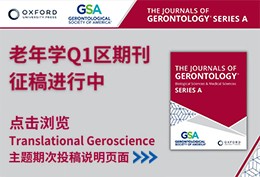
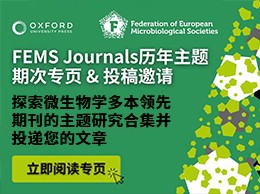





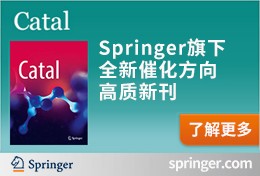
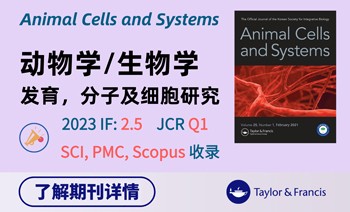











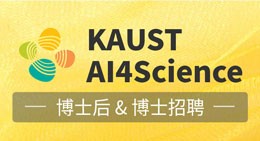




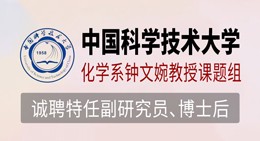

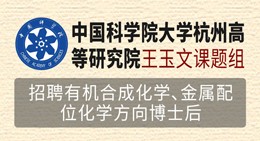



 京公网安备 11010802027423号
京公网安备 11010802027423号